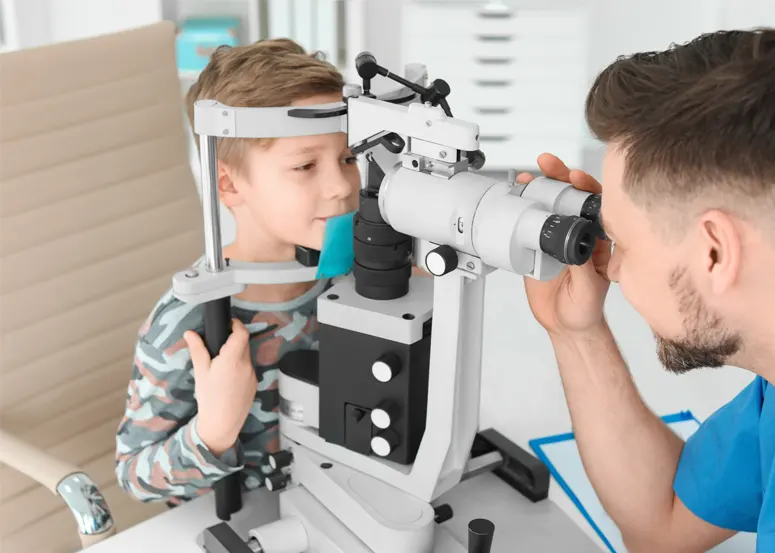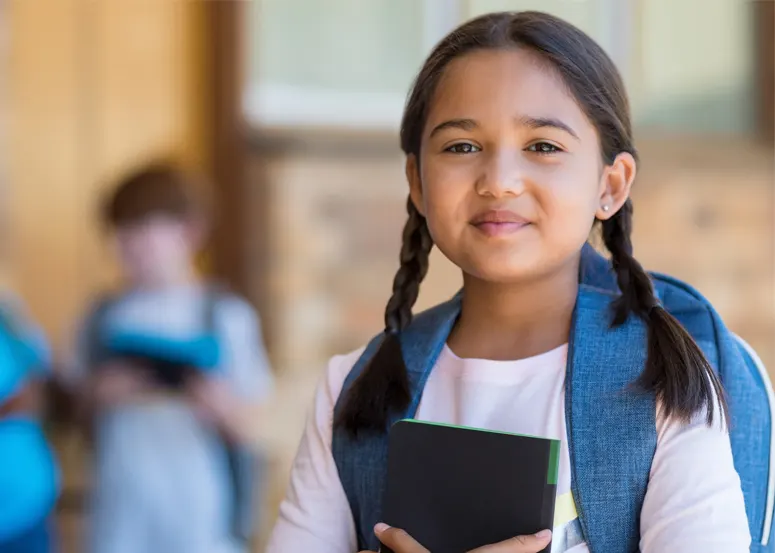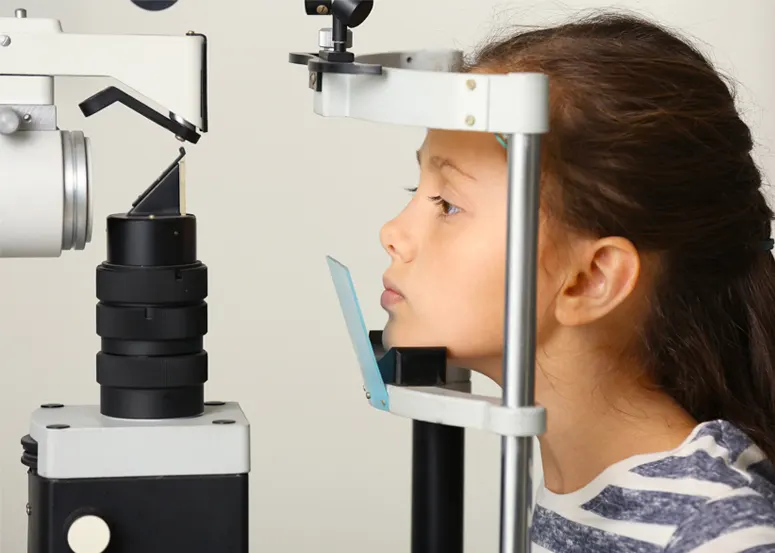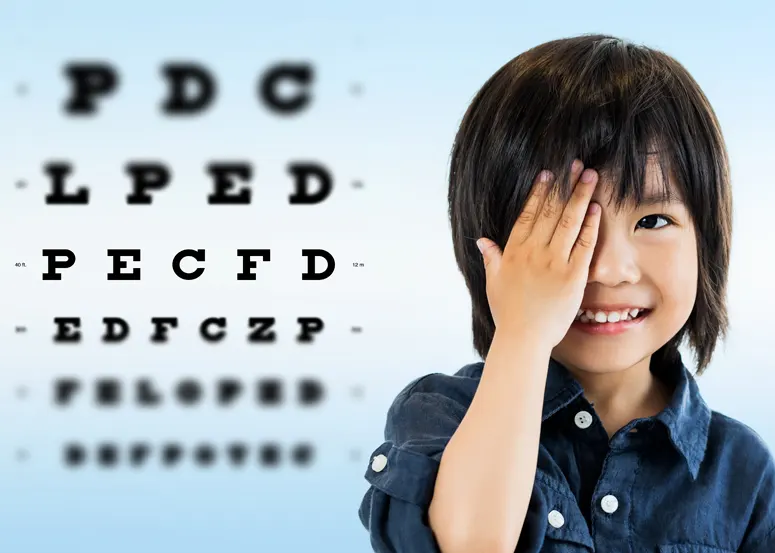Each year one in five children will head back to school with an undetected vision problem, despite the majority (79%) of Australian parents believing their children have great eyesight1. With only one in ten Aussie kids having a checkup in 2020 this means that a significant number of children may be missing out on good vision.
Children learn more from their vision than all other senses combined, and eye disorders are amongst the most common long-term health problems experienced by children2.
A boom in childhood myopia – or short sightedness – is an emerging concern. Myopia is a common eye condition that causes blurred distance vision and usually starts during childhood, typically progressing until the child stops growing.
More children than ever are at risk of developing myopia through a variety of factors including increased screen time and decreased ‘green time’ (time spent outdoors). With the COVID-19 pandemic having caused lockdowns around the world, researchers are already starting to see signs that lockdowns may have further accelerated the rates of myopia development in children3,4.
It’s important for parents to take their children for a regular eye examination to give them the best chance at success in the classroom, sports field and in the playground.
The importance of regular eye examinations with an optometrist
Good vision is vital to the educational, social, behavioural and physical development of a child. From having trouble reading something on the whiteboard or avoiding reading as getting sore eyes from close work, there are a range of ways untreated visual disorders can impact learning. Poor vision can also make it difficult to read other kids facial expressions or do fun things like catch a ball and play sports.
Some children are inaccurately labelled as slow learners, lacking confidence or even troublemakers when they actually have an undetected vision condition which can be identified and corrected with a simple visit to the optometrist. Some vision problems can be treated with simple eye exercises to strengthen or train eye muscles without the need for glasses to be prescribed.
While some signs of myopia are obvious, others are harder to identify, and children at a young age may not tell a parent there is anything ‘wrong’ as they assume everyone sees the world as they do.
Why managing myopia is important
It’s important to realise that children becoming short-sighted isn’t just about them having to wear glasses to help provide clear vision. High levels of myopia may cause permanent vision loss later in life through an increase in cataract, glaucoma and problems with the retina (the sensor layer at the back of the eye). As research and technological innovations in this area continue, optometrists now have an impressive arsenal of new management options which mean they can not only provide clear vision but slow down the progression of myopia.
This makes it crucial for children to have a full eye examination with an optometrist before starting school and then regular visits as they progress through primary and secondary school, as part of their general health regime.
It is important for parents not to assume that their child’s vision is necessarily normal in the absence of symptoms or that a single vision screening around the age of five provides anything other than short-term assurance about their child’s vision.
Where School and Government screenings do take place, they are very basic and do not generally assess the health of the eye or how the eyes work together as a team and are not a substitute for a comprehensive eye examination. In Australia a Medicare rebate is available for eye examinations with an optometrist.
What are the signs of myopia to look out for?
Some possible signs of myopia in children to look out for include:
- Having difficulty recognising objects or people in the distance or sitting too close to the TV
- Squinting, frequent blinking or rubbing the eyes,
- Complaints of headaches, blurred or ‘fuzzy’ vision
Time to add an eye test to your child’s health checks
There is an ever-increasing body of factors that myopia develops due to the interaction of both genetics and environmental factors. This gives us all the opportunity to intervene in the onset and progression of myopia with simple measures such as increased outdoor sunlight exposure and reduction of unnecessary near work. This, coupled with regular eye examinations, will help to manage myopia and reduce significant eye health issues in future years.
Is an eye test on your child’s back to school checklist? If not, it’s time to add it.
Discuss myopia management with your optometrist and visit www.childmyopia.com for more information.
Hear what Aussie children have to say about eye health and regular health checks – https://www.childmyopia.com/videos/eye-health/ and
https://www.childmyopia.com/videos/regular-health-checks
About the Author: Luke Arundel, Chief Clinical Officer, Optometry Australia, and founding member of the Australia and New Zealand Child Myopia Working Group.
The Australia and New Zealand Child Myopia Working Group is a collaboration of leading optometrists and ophthalmologists. The Working Group’s aim is to set a recommended standard of care for child myopia management, in order to slow progression of myopia in children.
Members are (in alphabetical order):
- Dr Rasha Altaie, Ophthalmologist, Auckland
- Luke Arundel, Chief Clinical Officer, Optometry Australia, Melbourne
- Jagrut Lallu, Optometrist and Immediate Past President of the Cornea and Contact Lens Society of New Zealand (CCLSNZ), Hamilton
- Margaret Lam, Optometrist, Adjunct Senior Lecturer School of Optometry and Vision Science, Faculty of Science (UNSW)
- Dr Loren Rose, Paediatric Ophthalmologist, Sydney
- Andrew Sangster, Optometrist and Board Member of New Zealand Association of Optometrists, Wellington
- Chair – Scientia Professor Fiona Stapleton, School of Optometry and Vision Science UNSW, Sydney
1Optometry Australia, 2020 Vision Index
2 Australian Institute of Health and Welfare 2008. Eye health among Australian children
3 https://bjo.bmj.com/content/early/2021/07/15/bjophthalmol-2021-319307
4 https://jamanetwork.com/journals/jamaophthalmology/fullarticle/2774808






